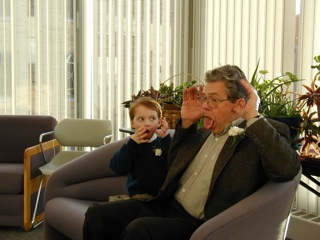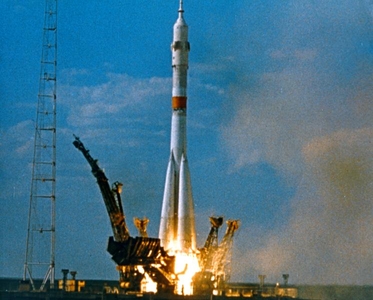Behavior, Energy & Climate Change—Top Ten Takeaways from BECC 2013
POSTED ON December 9th, 2013 BY adminThe Behavior, Energy & Climate Change (BECC) conference is a favorite of the Gigantic team — one we look forward to every year. I attended this year’s event just two weeks ago and found it energizing and informative, as always. Following are ten of my favorite quotes and related inferences based on what I heard.

1. Debbie Slobe, Senior Program Director, Resource Media
Slobe presented on the Science of Successful Visual Communications. She cited research that tells us what works best, including close-ups on faces — and preferably not stock photos. She argued that “real people experiencing real emotion” are more likely to prompt action. “Make people feel, not think,” she declared.
2. Dr. Nicole Woolsey Biggart, Professor, UC Davis Efficiency Center
Dr. Woolsey Biggart noted that faith communities are the largest organizers of people in the U.S. Perhaps those of us doing environmental outreach would benefit from making better use of these extensive and long-standing networks.
3. Brian Orland, Professor of Landscape Architecture Penn State, Institutes of Energy & the Environment
One of the most refreshing aspects of BECC is the fact that human beings are put at the center of the energy efficiency discussion. Now it seems obvious that this is critically important, but it took years before anything but technology and infrastructure was taken into account. As Brian Orland observed, however: “Buildings don’t care if they save energy; people do.” The same goes for waste reduction, pollution prevention, … and the list goes on.
4. Melinda Briana Epler, Chief Experience Officer, Mazzetti Consulting
Epler offered advice about how to understand and influence your target audience. “It’s not about you; it’s about them,” she asserted. “Meet them where they are, and [include them in] the solution-making.” Who better to design an outreach campaign than actual members of the target group?
5. Greg LeBlanc, Lecturer, Haas School of Business and Boalt Hall School of Law, UC Berkeley
LeBlanc gave a fascinating presentation on a relatively new field of study: behavioral economics. The bottom line? Decisions are made by different parts of the brain at different times. Unfortunately, it’s usually the limbic or “reptile” portion of the brain that dominates when a decision impacts us, in the present moment. Example? Do you want an orange or a candy bar right now? The candy, right? But how about tomorrow? You’re likely to make the healthier choice for your future self. So how do you get people to turn down their thermostat or recycle their food scraps now? Activate the frontal region of the brain before making your request.
6. Mithra Moezzi, Research Faculty, Portland State University
Dr. Moezzi uses the framework of storytelling to learn from building operators* what their barriers and benefits are when it comes to promoting energy efficiency in their buildings. She found out that the most important thing for them is limiting complaints from tenants. My inference? Helping them reduce the amount of grumbling they have to listen to about offices being too hot, too cold and so on, will go a lot farther than appeals to their environmental values. Another tip: “Help the building operators look like heroes to their bosses.”
*(For those of us working in waste more often than energy, the equivalent role would be a property or facility manager.)
7. Kathryn Janda, Environmental Change Institute, Oxford University
Janda argued that we, as marketers promoting conservation, need to “tell a new story.” For her, it’s all about relevance. “What do people care about, and how can we activate that?” A few suggestions: responsibility, family, and caring over time.
8. Karen McCord, Marketing Specialist, Sacramento Municipal Utility District (SMUD)
Ms. McCord told the audience that SMUD did “tons of research” before developing any of their campaign collateral and continue to do so on an ongoing basis. We know what a difference research makes as far as using the right tactics and messages, and we applaud SMUD for making it part of their outreach best practices.
9. Eric Olsen, Customer Energy Solutions, PG&E
Olsen was involved in a multi-year campaign targeting small businesses, one of the aims of which was to get them to switch from flat to time-of-use pricing. PG&E was hoping business owners would make other changes at the same time and thought this would be a convenience to their customers. However, the response to this was negative for the most part. The lesson for PG&E? “Make one significant change at a time.” Olsen noted they ended up allowing “a couple of years” to pass between the adjustments they asked their customers to make.

10. George Lakoff, PhD, Professor of Linguistics, UC Berkeley
Lakoff reminded us during his keynote speech: “People reason metaphorically.” And flowing from that fact, a piece of advice: “Think very carefully about the metaphors you use.” You may not think you use metaphors in your outreach campaigns, but you do. We all do — whether we’re aware of it or not. They can be verbal or visual, but they’re there. As Lakoff put it, “Marketing is metaphor,” and the same could be said of outreach. An example? The question of whether to “kick off” or “launch” a new program might make all the difference, depending on whether you’re addressing football fans or space buffs.
Many of the conference presentations are available for download here.
The next BECC conference is December 7-10, 2014 in Washington DC. See you there?